How Blockchain can Change Marketing and Advertising
Blockchain technology is an open-source distributed database using state-of-the-art cryptography.
Essentially, blockchains are about a rapid transfer of value.
What does this mean?
It means that we no longer need the services of a bank to authenticate who we are, to do transactions, to exchange money, etc. Banking as we know it would be eliminated from this ecosystem.
What about other industries or domains?
How can blockchain technology influence the way brands do marketing or advertising?
Blockchain – marketing data and advertising
First let’s take a look at the marketing and advertising challenges that brands and customers have faced in recent years:
- brands are collecting more data than ever before but they question the reliability, accuracy and transparency of this data
- brands are not able to ascertain how their advertising budget has been spent
- ad fraud has been rising globally
- although brands have a lot of data on their customers, they know too little about their preferences
- consequently, customers are overwhelmed with too many messages, ads, emails, etc
- these messages are not relevant and too frequent
- customers don’t trust their brands with their personal data
- Google and Facebook have attracted increasing ad revenues as middlemen for advertisers and website owners; Google’s advertising revenue grew nearly 25% in 2017 to $95,4 billion and Facebook’s ad revenue grew 49% to $39.9 billion
This is how blockchain can address brands’ and customers’ challenges:
- with blockchain technology, marketers can monitor where their ads are being placed
- marketers can control how their assets are delivered
- blockchain technology will ensure that real followers and consumers are engaging with brands’ ads
- ad fraud will be reduced
- ad engagement tracking can be more accurate which entails more precise digital attribution
- blockchain technology can solve the problem of ad frequency
- studies have shown that consumers are more willing to share their personal data to receive relevant offers
- blockchain’s transparent operations will help brands using this technology to build trust with their consumers
- transparency will allow customers to check if their favorite brand is true to its story or live up to its claims by looking at the brand’s supply chain and find out how the product was made
- through blockchain, advertising middlemen such as Google and Facebook will be eliminated
Here are 3 examples of how brands are already using blockchain technology:
MIT
As part of a pilot program, The Massachusetts Institute of Technology (MIT) has issued blockchain-based digital certificates to more than 100 graduates.
In October 2017, MIT partnered with Learning Machine, a software development company which created Blockcerts Wallet, an app that enables students to get a verifiable, tamper-proof version of their diploma that they can share with employers, schools, family, and friends.
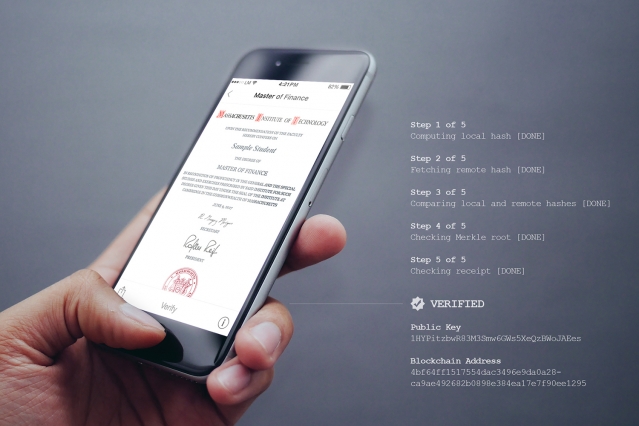 image source: news.mit.edu
image source: news.mit.edu
The pilot program aligns with MIT’s goals of empowering the students to be “the curators of their own credentials”, says Mary Callahan, Registrar and Senior Associate Dean.
Babyghost
Babyghost is a Chinese fashion brand that fits its fashion items (bags, cardigans, dresses, etc) with a chip. The byer then scans the item with his/her smartphone and access all the information and history of that item.
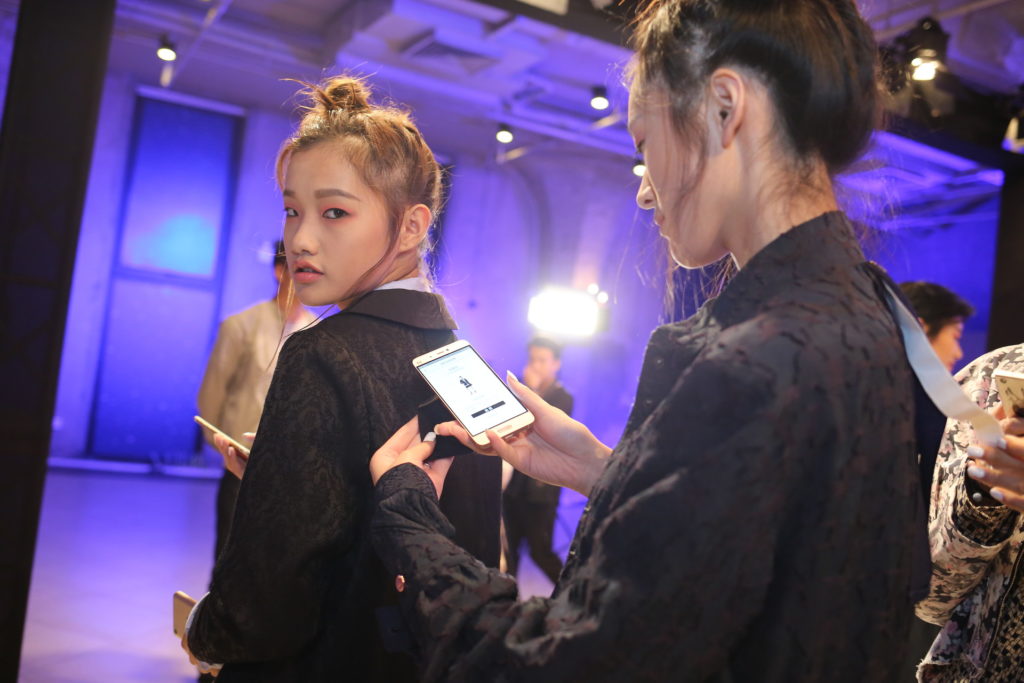
image source: fintechnews.sg
This technology offers an unparalleled interaction with the brand and the brand offers its buyers transparency. The app is called VeChain and is a product management solution on the blockchain.
The blockchain system gives a unique ID to every product that allows multiple parties to follow a specific product through the supply chain and post-sale.
With VeChain, Babyghost can create a great connection between their clients, technology and fashion. To celebrate brand landmarks, Babyghost can invite customers to scan their new bag and find that they had won a trip to an upcoming conference or free clothing. Possibilities are endless!
Walmart
Beginning with April this year, Walmart has been using blockchain technology to track package contents, environmental conditions, location, and other details.
Walmart official said that Blockchain was able to shorten the time it took to track produce from six days to two seconds.
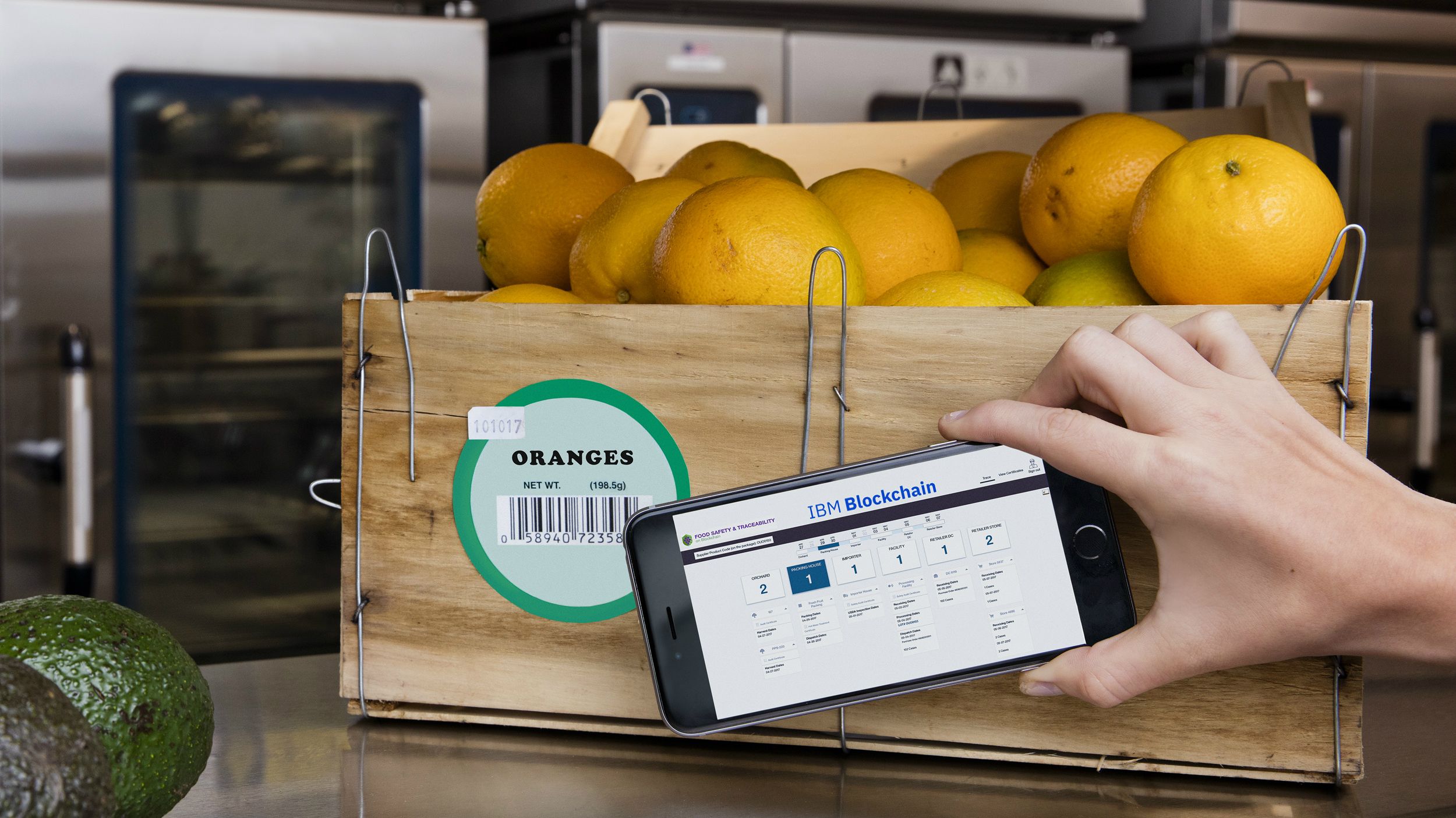
image source: qz.com
Thanks to the technology’s decentralised nature, Walmart’s blockchain-based system is protected from hacking attacks and data alterations.
Did you like our article?
Subscribe to our newsletter to receive our content.
How hard is it or not to monetize on YouTube in 2018
From now on, YouTube content creators won’t be able to monetize until they hit 10,000 lifetime views on their channel. YouTube believes that this threshold will give them a chance to gather enough information on a channel to know if it’s legit.
“In a few weeks, we’ll also be adding a review process for new creators who apply to be in the YouTube Partner Program. After a creator hits 10k lifetime views on their channel, we’ll review their activity against our policies. If everything looks good, we’ll bring this channel into YPP and begin serving ads against their content. Together these new thresholds will help ensure revenue only flows to creators who are playing by the rules,” wrote Ariel Bardin, YouTube’s VP of product management, in a blog post.
Moreover, according to polygon.com, YouTube executives acknowledged that life would change for a significant number of channels under the new setup. “The company attempted to defend its decision by noting that <<99 percent of those affected were making less than $100 per year in the last year, with 90 percent earning less than $2.50 in the last month>>,” wrote Julia Alexander.
At the same time, she is pointing out that any video that goes through Google Preferred, a classification that pairs top-tier ads with major creators’ videos, will now be watched by a human before advertising is approved. “This screening process should prevent objectionable content, like Logan Paul’s controversial video containing footage of a dead body, from being monetized. By cutting off the sea of channels that YouTube may not have been able to keep a human eye on, the company will also ensure that it can try to gauge what content is receiving placement for advertisers,”commented Alexander.
On the plus side, the companies must be rejoiced by the fact that YouTube is also giving advertisers more control over which channels get certain ads placed,a situation that permits YouTube to work with both creators in the Partner Program and advertisers to keep a better eye on content before it gets promoted.
Some great ideas on how a company or a content creator can monetize on YouTube can be found here.
Common grounds on European viewability principles
The European Viewability Steering Group (EVSG), a cross-industry body originally formed towards the end of 2015 by the Interactive Advertising Bureau Europe (IAB Europe), the European Association of Communications Agencies (EACA) and the World Federation of Advertisers (WFA), announced on August the launch of a comprehensive European Viewability Certification Framework.
This includes the publication of the first set of European Viewability Measurement Principles and will soon be followed by the launch of a Request for Proposals (RFP) process to identify suitable auditors across the region.
The Measurement Principles have been created to help reduce discrepancies in the data provided by different viewability measurement tools. Extensive consultation has been conducted with a broad range of industry stakeholder groups including – publishers, media agencies, advertisers, measurement companies, ad technology providers, national, international and cross-industry trade bodies. Notable contributions have been provided by the MRC in the US; JICWEBS in the UK; BVDW, AGOF and OWM in Germany; Digital Ad Trust in France; and key national trade bodies across Europe.
The Measurement Principles will be used as the basis for evaluating the performance of the technical approach undertaken by the viewability measurement companies. An evaluation report will be produced to help inform the potential issuing of a European Seal of Accreditation. The Seal will be recognised by all participating European markets and will remove the need for further market-by-market accreditation.
The ongoing management and implementation of the Certification Framework and awarding of the Seals will be undertaken by a related body called the European Authority (EA) – resourced by representatives from IAB Europe and EACA. The EA will work in conjunction with the appointed national bodies to ensure the certification framework is implemented effectively in each market.
The Certification Framework has been designed to offer a consistent solution across all European markets – irrespective of the existing status quo. In the interests of contributing towards the development of consistent, global standards, the EVSG envisages that the European approach will provide useful guidance for other regions or markets seeking to develop similar solutions.
Alison Fennah, Executive Business Advisor, IAB Europe said: “With digital ad spend surpassing €40bn it’s ever more critical to reinforce the quality of the digital advertising environment to underpin the delivery of free content. Ensuring that viewable impressions are measured correctly and consistently is a key first step. This initiative is designed to enable Europe’s varied markets to collaborate and create regional standards and deliver local growth.”
Jon Chase, Chair Media Agencies Council, EACA noted: “EACA are committed to helping shape and implement the drive towards improved viewability measurement standards across Europe and beyond. The ultimate objective being to establish a fully viewable digital ad environment. Whilst other challenges in the digital advertising ecosystem also require increased focus, reducing data discrepancies between the different viewability tools is a crucial step towards enhanced accountability and trust in digital media metrics.”
Rob Dreblow, Global Head of Marketing Services, WFA said: “Whilst advertisers investing online often work with their own definitions of a viewable impression, it is critical to have a baseline of quality in terms of how to measure a genuine opportunity to see. Building on the excellent work in the US and UK, we hope this initiative will serve to help markets around the world reduce discrepancies and improve the quality of viewability measurement as this project develops into global guidance.”
More about the whole process one can read here.
How relevant is still TV for your brand?
We are smarter and smarter consumers, more up-to-date with everything that is new and happening in the world of technology, people constantly changing and improving their laptops, mobile phones and software that they are using. Moreover, 2017 proves to be the first year that the media investments in digital are surpassing the TV ones. In this context, it’s only natural for a CEO or a marketing specialist to wonder how relevant is still TV for the brand they are taking care of?

In other words is video killing the radio star? Or is it a non-subject that the specialists are over-exaggerating talking about? What do you think? Well, this is what we think.
First of all we believe that there is not a general answer of yes or no. The right answer for your brand will come from your target: who are they, what are their consumption preferences, their passions, hobbies, desires, etc. Better knowing your target will give you the right answer. Because if you are looking at the younger generation the answer is pretty easy, but if you are targeting the Millennials or the older generation you will have for sure another look at the situation and things will not seem that much black and white.
Along with the channels and devices available for watching TV, the ways for brands to reach consumers through the medium are proliferating. Quoted by Marketing Week, Otto Rosenberger, CMO at Hostelworld.com, believes that TV buying is changing, and with good reason. He says: “It really always starts with being obsessed about where the customer is. It’s about where they are and what drives them, which drives our creative and media decisions.” Research released by Ofcom earlier this month shows that while live television remains hugely important, catch-up TV viewed via the internet and programming premiered online are taking up an increasing share of viewing time for younger audiences in particular. It reveals that today, only 50% of 16- to 24-year-olds’ TV consumption is through live television, rising to 61% for 25-to 34-year-olds.
“The overarching shift, therefore, is in the power of technology and the internet. It is not only changing the way people watch TV, it is also creating a significant change in the way TV advertising is being traded towards targeting specific segments of audiences known to be watching rather than programmes that research panel data suggests they might see,” explains Marketing Week.
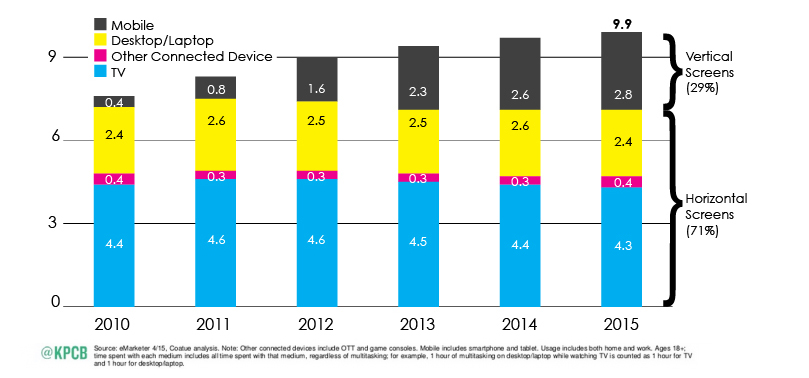
Not a long time ago, Turner Broadcasting and Horizon Media partnered on with marketing-analytics company MarketShare, which meta-analyzed thousands of marketing optimizations used by major advertisers from 2009 to 2014. MarketShare’s analysis found that TV advertising effectiveness has remained steady during that time period and outperforms digital and offline channels at driving key performance metrics like sales and new accounts. The study also showed that networks’ premium digital video delivered higher than average returns when compared with short-form video content from non-premium publishers. More on the main results you can read here.
Moreover, we need to think about the fact that a deep investigation of the decision journey often reveals the need for a plan that will make the customer’s experience coherent—and may extend the boundaries of the brand itself. The details of a customer experience plan will vary according to the company’s products, target segments, campaign strategy, and media mix. But when the plan is well executed, consumers’ perception of the brand will include everything from discussions in social media to the in-store shopping experience to continued interactions with the company and the retailer.
“Consumers’ perception of a brand during the decision journey has always been important, but the phenomenal reach, speed, and interactivity of digital touch points makes close attention to the brand experience essential—and requires an executive-level steward. At many start-ups the founder brings to this role the needed vision and the power to enforce it. Established enterprises should have a steward as well. Now is the time for CMOs to seize this opportunity to take on a leadership role, establishing a stronger position in the executive suite and making consumers’ brand experience central to enterprise strategy,” said David C. Edelman for Harvard Business Review.
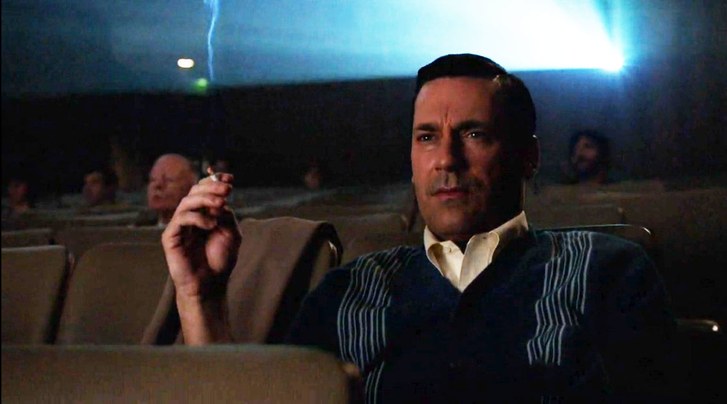
A study done by Arris showed that 84% of respondents wanted to fast forward through the ads they watch, while 60% of them download or record shows so they can skip commercials. Even Super Bowl ads have lost their effectiveness: a 2014 study showed that 80% of them do not increase sales for the companies running them. The increased use of smartphones and tablets also detracts from TV commercials’ relevance. A study in May 2015, quoted by The Guardian, showed that researchers found that viewers who focused just on the TV screen were able to recall 2.43 out of every three brands mentioned, while smartphone and tablet users only managed to recall 1.62 on average.
Moreover, advertising’s even losing its role as an information source: a study by Mindshare earlier in 2015 showed that the percentage of Americans who said advertising helped them learn about products and services dropped from 52% in 2005 to 41% in 2014.
Still, all in all, TV is still relevant and will still be as long as the brands will know how to adapt to the new changes it brings and will know how to showcase its added value. As long as the TV advertising will continue to adapt and become better and more relevant for its audience, it will of course remain very important.
On how brands can optimize their TVCs to drive product discovery, you can read here.
The Best 10 CSR Campaigns Of The Last Years
More than ever a company’s sustainability and CSR efforts are important and highly regarded by consumers and other brands in the market.
Although both clients and agencies let their creativity run wild on this type of campaign, looking for the most appealing, insightful, and emotional manner to get to the consumer, realizing a good, strategic, and creative CSR campaign is not such an easy task as some might think.
Therefore, in no particular order, we decided to present you 10 of the most interesting, smart, and beautiful CSR campaigns of the world in the last years, that really impressed us and hopefully will inspire you as well.

5 words for high-converting headlines
The Best 10 CSR Campaigns of the last years
1. Marks & Spencer – “Shwopping”
Every item you place in one of our Shwop boxes helps to put an end to poverty. Your Shwopped items are resold, reused, or recycled and allow Oxfam to fund all sorts of vital projects around the world.
Incredibly, since 2008 the M&S and Oxfam Shwopping partnership have collected over 20 million items, worth an estimated £16 million for Oxfam’s work.
So next time you’re clearing a space in your wardrobe, drop any unwanted clothes into your bag and drop them off in a Shwop box at your nearest M&S. It’s so easy.
2. National MS Society – “Off My Wave”
After decades of surfing, local legend Steve Bettis was diagnosed with progressive MS in 2006. While surfing is still central to his life, he hasn’t been able to get on the water in 10 years.
National MS Society and professional surfer Robert “Wingnut” Weaver worked together to create a virtual-reality experience to get Steve back on a wave.
Share your own experience with someone at WeAreStrongerThanMS.org.
3. Under Armour – “I Will What I Want”
The campaign speaks to women who do not need permission, advice, or affirmation from others in order to achieve their dreams.
Droga5 developed an extensive campaign that kicked off with a film featuring ballerina Misty Copeland who proves that inner strength and sheer will can trump adversity.
4. Misereor – The Social Swipe
This was the world’s first interactive advertisement display able to accept credit card donations.
All potential donors had to do to donate €2 to German international development charity MISEREOR was swiping their credit card through a specially designed poster. Once they’d done this, they received instant feedback on what their gift would achieve.
There were two creative executions. On one poster the credit card cut through the image of the bound hands of an imprisoned Filipino child.
On the other, the donors could use their credit cards to cut a slice of bread from a loaf. The bread represented the cost to provide a daily meal for a family in Peru.
Moreover, donors were given the chance to turn their one-off gift into a regular gift through a request on their bank statement.
5. Unilever – Farewell To The Forest
Unilever has set out to protect one million trees in Brazil and Indonesia.
This is all part of a wider scheme to halve the environmental footprint of their products by 2020 – a fast-approaching deadline.
Between them, London-based Ogilvy & Mather, and Argentinian Ogilvy spin-off DAVID have created a touching film to promote this goal.
6. Samsung – Bringing Light To Ethiopia
Samsung’s partnership with the Korea International Volunteer Organization has brought solar-powered lanterns to areas where electricity is scarce.
This resource has helped children, like Aster, help their family. With added light, she is self-sufficient and able to: make more baskets, save money, and provide for her family.
7. Ad Council – #IamAWitness
“I am a Witness” for Ad Council introduced the world’s first emoji created for a social cause.
The emoji, which is now on every iPhone and Android phone, is a way of combating not just bullying but also any apprehensiveness about stepping in that witnesses may be feeling.
Eighty-eight percent of teens that use social media reports witnessing others being mean or cruel on social networking sites.
There are a lot of anti-bullying efforts speaking to bullies and victims, but, one key audience is rarely targeted: those who are witnesses.
Ad Council’s “I Am A Witness” campaign activates the “silent majority” of teens who witness it each day, transforming them from passive bystanders into a united, empowered, and active collective that will speak up against bullying.
The target audience was teens, ages 11-17—a difficult audience to reach through traditional media efforts—with the goal of getting them to understand and use a new campaign emoji to shut down instances of bullying.
8. Nivea – Mom’s Touch
Skincare brand Nivea India touched our hearts with its recent social initiative #MomsTouch which brought forth stories of extraordinary mothers.
Nivea partnered with Aseema Charitable Trust, an organization dedicated to providing quality education to children from marginalized communities.
The social media-driven campaign portrayed the story of some extraordinary mothers who want the best future for their children, despite having faced adversities all throughout their own lives.
Viewers could join in the noble cause either by sharing the video on their social networks or by direct donations to the charitable trust. Each time one shared the film, Nivea contributed 100 grams of rice.
9. Lenovo-Yuwa – #PitchToHer
Yuwa, a not-for-profit organization that teaches girls to play football to make their lives better, partnered with Lenovo for #PitchToHer – a social campaign that invited the brightest minds to pitch smart ideas that can impact the lives of these girls through technology. The idea that convinced them won a month-long sponsored internship.
The agency behind the campaign, Experience Commerce introduced the girls to the wonders of technology.
They placed their village Hutup on Wikipedia and Google Street View.
They played songs, learned to use Makey-Makey kits, and created music with them.
They also experimented with lighting up solar jars, GoPro cams, and light painting.
10. Jet Blue – Flying It Forward
The campaign asked consumers to submit where they would go if they had a free flight to spread good.
The best idea then won a free ticket.
Once awarded, the plane ticket was then passed on to the next do-gooder.
Learn the best strategies how to reach more customers
Join BRAND MINDS 2023 and learn from Digital Marketing Expert Neil Patel how to generate more revenue using digital marketing.
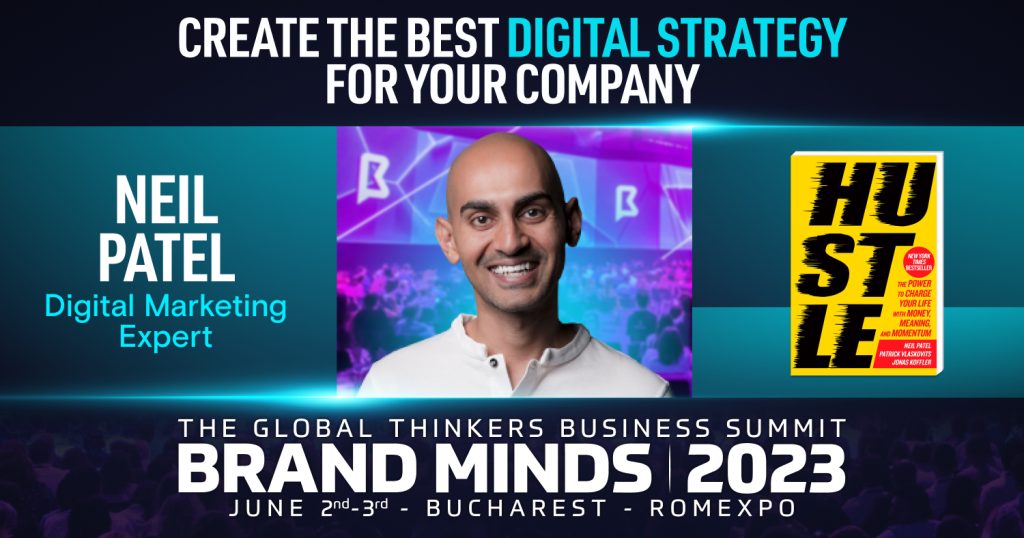
Join the Conversation
We’d love to hear what you have to say.
Get in touch with us on our LinkedIn Group, Facebook Group or Twitter.
5 Things you might not know about Madonna Badger
Chief Creative Officer & Founder of the Badger & Winters, Madonna Badger describes it as an advertising, branding and design agency specializing in creating powerful ideas that establish enduring emotional connections with women. Being creatively led by a woman, it informs their collaborative process and deeply empathic approach to understanding women’s values and desires.
“Our goal is nothing short of brand love,” says Madonna Badger on Linkedin.
Interested in knowing more about one of Brandminds’ 2017th Asian Summit speaker? Here are some fact you might not know about her:
1.She is credited with creating the famous Calvin Klein ad featuring Mark Wahlberg.
2. She was featured on the Crain’s New York Business 40 Under 40 list in 1996.
3. In a campaign with the hashtag #WomenNotObjects, the Manhattan advertising executive is looking to fight the objectification of women in the marketing and advertising world. “People are really seeing that objectifying women is really up there with inequality of women,” Badger told Matt Lauer on TODAY Tuesday. “I think that sex sells, but you know what the worst part is? It’s the harm we’re doing, and for me, that’s really what made me make this decision.” Badger has also pledged that her firm, Badger and Winters Group, will not use women as props or overly re-touch photos of women in their advertising.
4. “#WomenNotObjects” has helped Badger & Winters reshape itself as an agency and focus on assisting clients across all industry categories to connect with women in genuine ways, said Mr. Winters, for AdAge.com.
5. In June, for the 2017 Cannes Festival of Creativity, Ms. Badger spoke on a panel about gender, diversity and objectification of women with Procter & Gamble Chief Brand Officer Marc Pritchard.
Music, a huge marketing tool
It has the power to connect us and therefore it’s inestimable for brands. It can also take us away and move us into an Universe where we are hard to be reached, where we connect with our emotions and feelings better than with anything else.

Music triggers memories of messages, experiences, and other moments. Scientists at UC Davis, Live Science reported, used brain scans to show how music and recall are intrinsically linked. When we think about key moments in our lives, there’s a high likelihood we’ll remember a song along with the memory or the song will trigger memories of an event.
Identifying the right audio space is critical — a long-term, consistent audio relationship can build tons of affinity for your brand. Why? As demonstrated in an April article in the Journal of Consumer Psychology, people process repetitive song lyrics more fluently and adopt them faster than they do other types of song lyrics. If your brand is strongly associated with a particular musician, a style of music or song, it may get a boost when that tune is heard outside of your content. The number of people who’ve viewed Justin Bieber’s playlists on Vevo is larger than the combined population of the world’s two most populous countries, China and India.
Moreover, music is powerful because it is pure content and it stimulates social interaction and drives loyalty. Disruptive streaming technologies and the onset of multi-screen user behavior have forced drastic shifts in the use of music as a marketing tool by music labels, entertainment companies and brands across multiple consumer categories. Music is an emotional touchpoint being “used in advertising and marketing to help ensure these connections, whether it’s through the use of a particular artist, a set of lyrics, or a specific song structure that makes you actually feel something,” sayd Lori Feldman, EVP Brand Partnerships and Creative Synch Licensing at Warner Brother Records, quated by mashable.com.
At its core, music creates emotional connections. It triggers dopamine production in our brains, which makes us happy. Music is the universal language that connects people across generations and geographies. For marketers, developing a strong music strategy can reap huge dividends. Partnering with the right artist, song, or music experience can generate buzz, excitement, and passion around a brand, and help connect with consumers on an emotional level like few other cultural industries can.
Russell Wallach, President of Live Nation, believes it makes sense for brands to tie music into their marketing strategies. Wallach says, “You’re seeing it today from many brands, whether it’s in their advertising or through supporting a concert or given artist. It can also be great for the artist, as the partnership can help provide extended exposure to a wider audience.”
Live music and festivals are creating long lasting friendships and connections
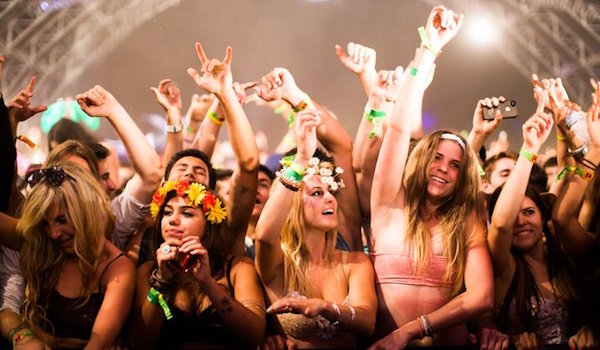
photo source: craveonline
Coachella, SXSW and Bonnaroo or local festivals such as Summer Well, Electric Castle, Untold, have become lifestyle experiences where Millennials blog, take selfies and create videos and other content to broadcast on their digital channels. If we take a look at Coachella’s demographic, the average festival-goer is between the ages of 18-34 years old, is willing to pay USD 300+ for a festival pass and has a dedicated interest in what’s new and next. For marketers, it makes Indio, Calif., the perfect place to achieve quality and quantity in terms of reach and possible engagement. And of people buying branded products. Moreover, for the past several years, retail brand Lacoste spotted the opportunity and has hosted the Lacoste Live! Pool Party at Coachella. The event encouraged attendees to socialize with one another while discovering fresh, brand-aligned music. Also on a plus side, as shown in a study conducted by Momentum Worldwide, a customer attending a branded live experience drives 65% of people to recommend the brand and 59% to buy it at retail afterward.
Several brands worldwide are famous for making music part of their marketing DNA, as adage.com shows in an article or imediaconnection.com here.










